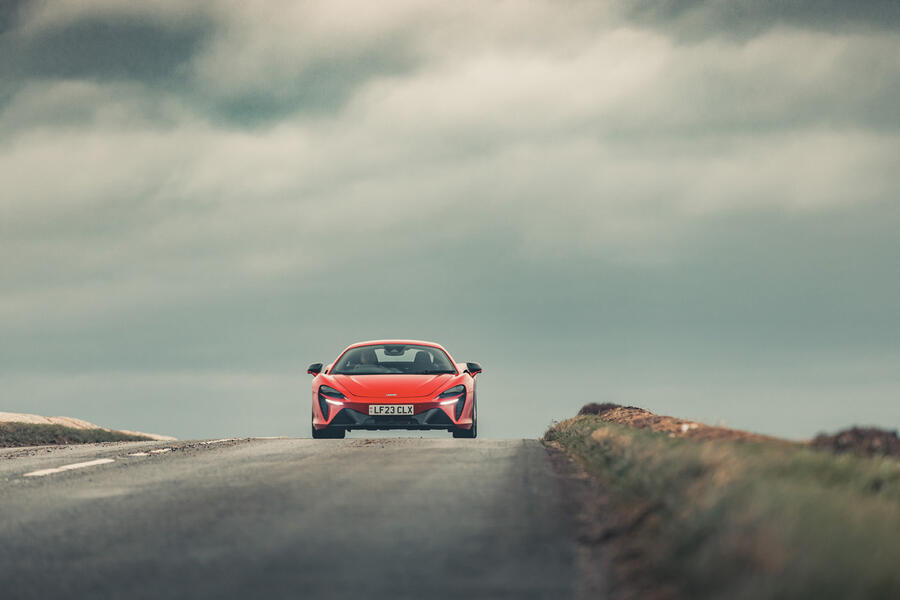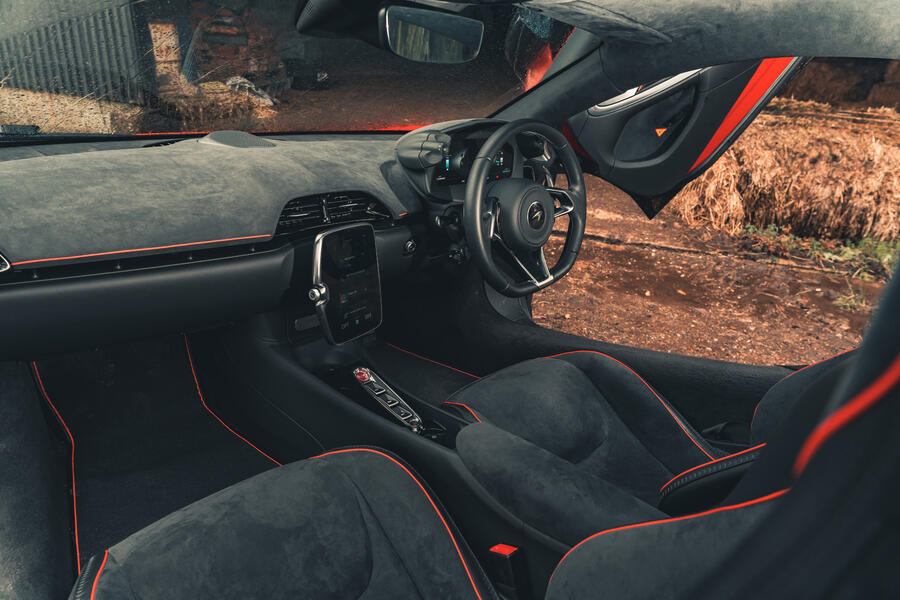Has hybrid supercar got through its teething troubles? Our new arrival will reveal all
Why we’re running it: To see if the most important McLaren in a dozen years is as easy to live with as it is fun to drive

Life with a McLaren Artura: Month 1
Welcoming the Artura to the fleet - 17 January 2024
It has, it should be said, been a while. We first drove the McLaren Artura in the summer of 2022 at a launch that had itself been delayed from the autumn of 2021.
And even then, the car wasn't ready. As road test editor Matt Saunders put it at the time: "The Artura will be a fine car, I expect, once its maker has finally and fully answered the challenges associated with its armoury of new technology, among which number a completely new carbonfibre chassis tub; a new electrical architecture; an all-new V6 engine and eight-speed transmission; a new generation of infotainment system; and all of its plug-in hybrid componentry.
But the Artura's time of readiness, I fear, may not be quite here yet."Sometimes I goggle at the sheer ambition of this project, just as I did a few years back when another comparatively tiny car maker called Aston Martin decided to create an all-new platform for its all-new SUV and build it in an all-new factory.
Just delivering the Artura's engine to market, emissions-compliant and fully homologated right around the world, would have been a task to make Hercules think he'd got off lightly.
When Aston tried the same, the whole thing ended up in the bin. And that electrical architecture, faster, lighter and fit for McLarens for generations to come though it is, would have been no less of a headache. No wonder there were teething troubles.

But this particular Artura is the real deal, or at least it needs to be. Unlike the launch cars, it's no pre-production prototype but a customer-specification one for which no excuse should be needed or made - nicely run in, on the button, ready to go.
And for the next few months, through weather fair and most likely foul, it's going to be my daily driver.
I would be lying if I said I wasn't excited by the prospect. I know we should be all gimlet-eyed over such things, but if you can manage that when someone lobs you the keys to a sub-1500kg, 671bhp supercar and doesn't want them back for a while, it's possible that you're in the wrong line of work - or play.
I could have had a lot more say in its specification, but so busy is McLaren filling existing orders that a new car wouldn't have arrived until the summer, and while I might enjoy it even more then, I don't think anyone wants to wait any longer - and besides, a cold, wet winter is a far sterner challenge. If it can prove itself to be an all-season, all-reason kind of supercar, that will be a potent point in its favour.

All I asked for was a car with comfort seats, because I intend to drive it a long way, and a nose lift to enable it to get down my drive. What turned up was a car with an option spend of over £30,000, which may sound a lot but which I expect is fairly typical, perhaps even slightly modest.
I was a little concerned when I heard it was orange (I'm a dark grey or blue don't-look-at-me kind of guy), but this is the darkest of four oranges, and I think it looks great.
The Performance Pack adds nappa leather, some titanium finishes, Alcantara surfacing and so on, while the Technology Pack adds a 12-speaker audio upgrade, adaptive cruise control, parking cameras and lane departure warning - which defaults to off, where it will remain.
The only other chunky costs were the sports exhaust, which I wouldn't have unless someone told me it were essential for resale value, and gorgeous 10-spoke, ultra-lightweight forged alloy wheels.
I'm mildly amused by the Practicality Pack, which adds the nose lift, parking sensors and soft-close doors - amused because it's a no-cost option and I'd be interested to see if McLaren could supply a car without it.
Why not just make it standard? I'm not sure, but my inner cynic isn't blind to the fact that were it made so, the car's kerb weight would be fractionally over, not under, the magic 1500kg mark...

First impressions? Wrong cruise control stalk aside (it lacks the button that varies the distance to the vehicle ahead but otherwise works just fine), the car is perfect. Fit and finish is exactly what you would hope it would be for such a car and those electronics have as yet not dropped so much as a stitch.
And I'm already a huge fan of the electric side. The power it brings, the lag it eliminates and so on are for later reports, but right now, as I get to know the car, I treat it like a civility mode.
It allows me to creep away from the house at appalling hours in the morning without disturbing my neighbours, I waft silently through towns and villages with any prior announcement of my arrival and on journeys that come within its 19-mile range, it makes this supercar cheaper to run than my 1.5-litre Volkswagen Golf.
These are early days for the Artura and me, but if the idea was to make up for lost time, it could hardly be doing it better than this.
Second Opinion
Being a supercar, the Artura has clear appeal, but it’s its specific flavour of supercar-ness that I find especially compelling. It may be a hybrid and supremely complex, but it has an organic, subtly gritty manner about it that you don’t find elsewhere. The comfort seats are a good idea, too.
Richard Lane
Back to the top
McLaren Artura specification
Specs: Price New £189,200 Price as tested £221,400Â
Options Technology Pack £6800, sports exhaust £4700, super-lightweight forged alloy wheels £4500, performance interior £4400, Ember Orange elite paint £4400, powered and heated comfort seats with memory £3300, Black Pack £2000, gloss black interior finish £1100, Stealth exhaust finish £1000, Practicality Pack £0
Test Data: Engine V6, 2993cc, twin-turbocharged, petrol, plus 94bhp axial-flux electric motor Power 671bhp at 7500rpm Torque 531lb ft Kerb weight 1498kg Top speed 205mph 0-62mph 3.0sec Fuel economy 61.5mpg CO2 104g/km Faults Wrong cruise control stalk fitted Expenses None
Back to the top





